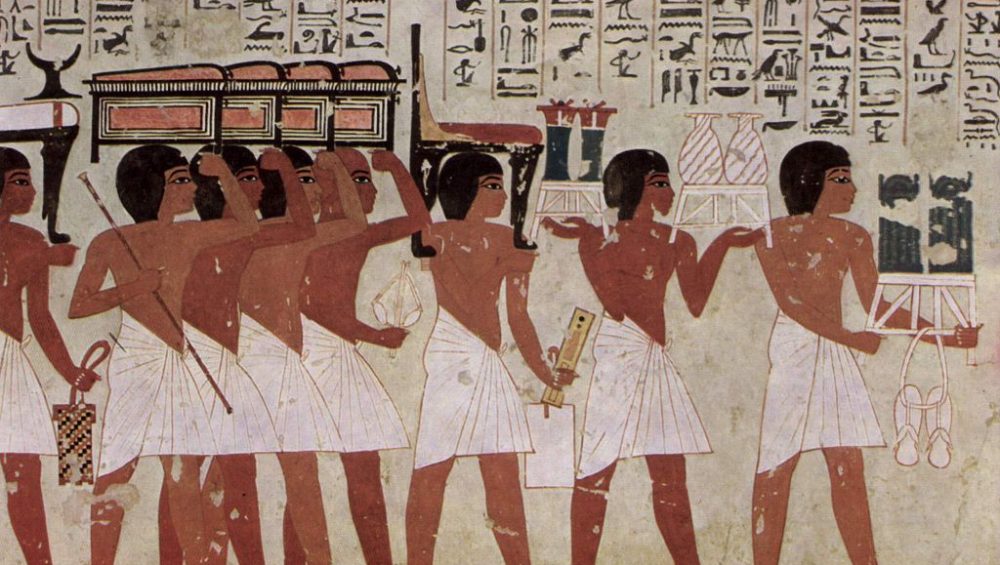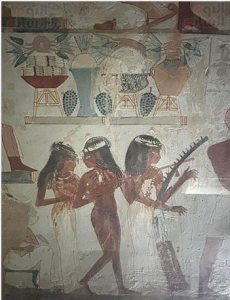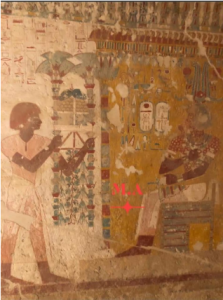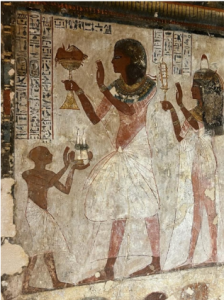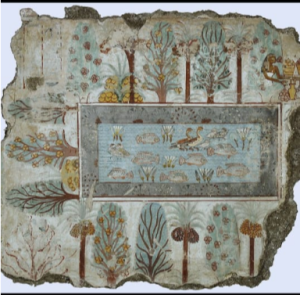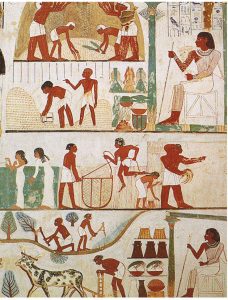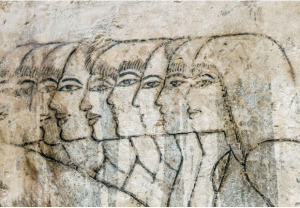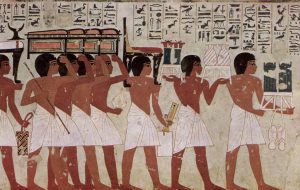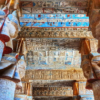9Как короли, так и их люди
Со времен Старого царства вельможи (высокопоставленные чиновники) из окружения царя и его министры привыкли быть похороненными рядом со своими царями. В Саккаре мы видели гробницы высокопоставленных чиновников рядом с пирамидами царей Старого царства, например, гробницы Кагемни и Мерерука, а также других вельмож. Эта традиция продолжалась и в Среднем царстве, как в Западных Фивах при 11-й династии, так и в Фаюме при 12-й династии. В период Нового царства эта традиция усилилась, и западный берег Фив стал заполняться гробницами знати (министров, жрецов, приближенных царя и высокопоставленных военачальников). После того как царь Тутмос I построил первую гробницу в Долине царей и возвел город для рабочих, известный как Дейр-эль-Медина, гробницы вельмож стали распространяться по всему западному берегу Фив. Будь то вокруг погребальных храмов царей, возле Дейр-эль-Медины или в Долине цариц. Заметно, что каждый знатный человек заполняет свою гробницу не только религиозными сценами, в которых он поклоняется богам или приносит жертвы царям в загробном мире, но и сценами своей работы и повседневной жизни. Эти сцены повседневной жизни варьировались от одной гробницы к другой в зависимости от характера работы владельца.
Среди самых известных их гробниц и гробниц с самыми красивыми сценами:
Гробница Рехмира (визиря Тутмоса III):
Среди самых красивых сцен в его гробнице - сцены пира и прибытия азиатов.
Гробница Нехта, номер 52 (кладовщик царя Тутмоса IV):
Самая важная сцена - это сцена с тремя женщинами-музыкантами.
Гробница Усера, номер 21 (начальник царской приемной Тхутмоса I):
Самая важная сцена - перетаскивание саркофага на санях. Есть также сцены с редко встречающимися животными, такими как кролики и гиены.
Гробница Осархата, номер 51, времен правления царя Сети I:
Самая важная сцена - его прогулка с женой: оба в виде птиц с человеческими головами, соединив руки, пьют из озера.
Гробница Тани, номер 154 (виночерпий царя Тутмоса III):
Здесь мы видим сцену рытья колодца.
Гробница Неферхотепа:
Самая важная сцена - сцена лютниста.
Гробница Аменемхата, период правления Тутмоса III:
Мы видим сцену игры на арфе.
Гробница Небамуна, эпоха XVIII династии:
Сцена взвешивания золота.
Гробница Менны:
Со сценами сельского хозяйства.
Гробница Рамоса, номер 55 (губернатор Фив):
Наиболее важными сценами являются надписи двух разных периодов, для отца и сына, и она отличается включением атонистского искусства, связанного с Ахенатеном, что показывает нам разницу между школами древнеегипетского искусства.

